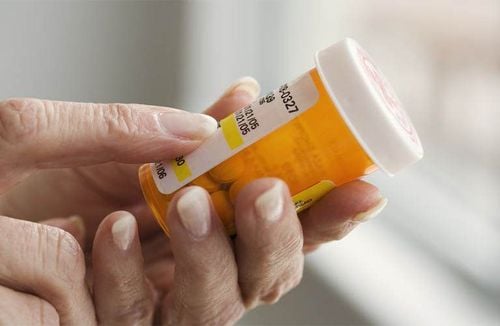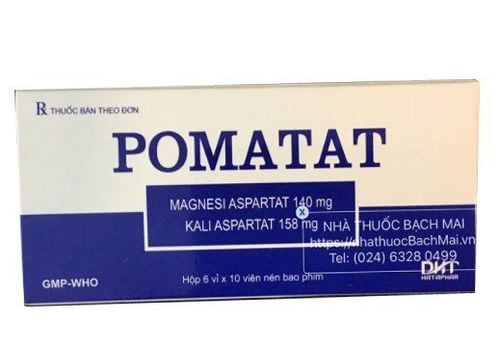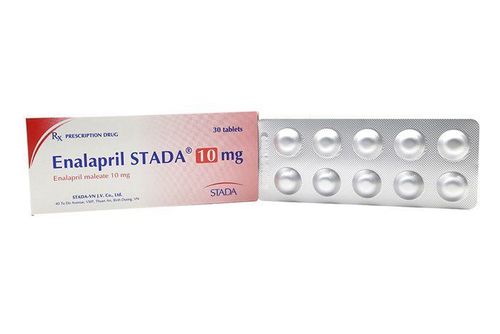This is an automatically translated article.
Benalapril 5mg medicine has the main ingredient enalapril maleate. The drug is effective in the treatment of high blood pressure and heart failure. To use the drug safely, patients need to know the information about the use as well as the precautions when taking the drug. The following article will provide readers with this useful information.
1. Uses of Benalapril 5
Benalapril 5mg is indicated in the following cases:
Patients with high blood pressure due to kidney disease Degrees of essential hypertension People with two conditions of hypertension and diabetes at the same time Treat pathology insufficiency congestive heart failure Prevention of ventricular dilation after myocardial infarction Treatment of heart failure On the other hand, Benalapril 5 is not allowed to be prescribed to the following groups of people:
Patients with hypersensitivity to any of the ingredients of Benalapril 5 Patients with aortic and renal artery stenosis Hereditary or idiopathic angioedema History of angioedema related to previous angiotensin-converting enzyme inhibitor (ACEI) treatment. Women in the 2nd and 3rd trimesters
2. How to take and dose of Benalapril
Benalapril 5mg is taken orally. The drug can be taken before or after a meal, as food has not been studied to alter the bioavailability of the drug. The dosage of the drug will depend on the medical condition, health and purpose of treatment. Specifically:
Primary hypertension:
The starting dose is 5 mg, the dose can be increased depending on the degree of hypertension, the maintenance dose is determined after 2-4 weeks of treatment. The daily dose is 10-40 mg, taken once a day or in two divided doses. Maximum dose 40 mg/day. It is advisable to start at a low dose because of the potential for symptomatic hypotension, and should not be used concurrently with diuretics. Treatment of renal failure
Creatinine clearance 30 - 80 ml/min, dose 5 - 10 mg/day. Creatinine clearance 10-30 ml/min, dose 2.5-5 mg/day. Treatment of heart failure
An initial dose of 2.5 mg, which can be gradually increased to a therapeutic dose, must be done under careful monitoring.
Currently, there are some cases of Benalapril 5 overdose. Some symptoms of overdose include: hypotension, circulatory shock, electrolyte disturbances, renal failure, hyperventilation, tachycardia, palpitations, bradycardia, dizziness, anxiety and cough..
To handle this condition, the patient needs to be quickly taken to a medical facility. Below are some measures to treat drug overdose
The doctor will prescribe an intravenous infusion of isotonic saline solution. In case of hypotension, the patient may be considered for treatment with intravenous angiotensin II and/or intravenous catecholamines. Patients can also be prescribed to induce vomiting, gastric lavage, use adsorbents and sodium sulfate. Pacemaker therapy is indicated for treatment-resistant bradycardia. If you forget a dose, take it as soon as you remember. If it is almost time for the next dose, skip the missed dose and take the medicine as scheduled. Never use a double dose.
3. Benalapril side effects
During the use of the drug, patients may experience some undesirable effects such as: anemia, hemolytic anemia, agranulocytosis, headache, depression, confusion, insomnia, blurred vision eyes, dizziness, hypotension, rhinitis, nausea, digestive disorders, liver failure, hepatitis, weakness, fatigue,..
The above are not all the side effects of Benalapril 5 . Therefore, when taking the drug, if you experience any unusual symptoms, the patient should also notify the doctor for advice and treatment.
4. Benalapril drug interactions
Drug interactions occur that can increase the side effects or decrease the effectiveness of the drug. Here are some drugs that can interact with Benalapril:
Potassium-sparing diuretics or potassium supplements Diuretics (thiazide or loop diuretics) Taking Benalapril with other antihypertensives can cause increase the antihypertensive effect of enalapril. Concomitant use with nitroglycerine and other nitrates or other vasodilators may further reduce blood pressure. Combining lithium with Benalapril 5mg will increase serum lithium concentrations and toxicity during concomitant use of lithium with an angiotensin-converting enzyme inhibitor. Tricyclic antidepressants/antipsychotics/anesthetics/narcotics in combination with Benalapril may further reduce blood pressure. Nonsteroidal anti-inflammatory drugs (NSAIDs) reduce the antihypertensive effect of angiotensin-converting enzyme inhibitors. Sympathomimetic agents reduce the antihypertensive effect of angiotensin-converting enzyme inhibitors. Antidiabetic drugs should not be combined with angiotensin-converting enzyme inhibitors, as they may increase the hypoglycemic effect with the risk of hypoglycaemia. You should not drink alcohol while using Benalapril because it can cause low blood pressure.
5. Notes when using Benalapril
Patients with hypertension should use enalapril with caution because symptomatic hypotension may occur if the patient is volume-depleted. Benalapril 5 should be avoided in cases of cardiogenic shock and hemodynamic obstruction. In patients with renal impairment, the initial dose should be adjusted according to the patient's creatinine clearance and then according to the patient's response to therapy. Benalapril increases the risk of hypotension and renal failure in patients with bilateral renal artery stenosis or narrowing of the artery to a functioning kidney. Patients on high-velocity membrane dialysis and concomitant treatment with ACE inhibitors may experience anaphylaxis. Enalaril passes into breast milk, so doctors often recommend that nursing women should not take Benalapril Medicines can cause side effects such as dizziness, headaches, so people often operate machinery or drive vehicles. should be careful when taking the drug.
Please dial HOTLINE for more information or register for an appointment HERE. Download MyVinmec app to make appointments faster and to manage your bookings easily.













